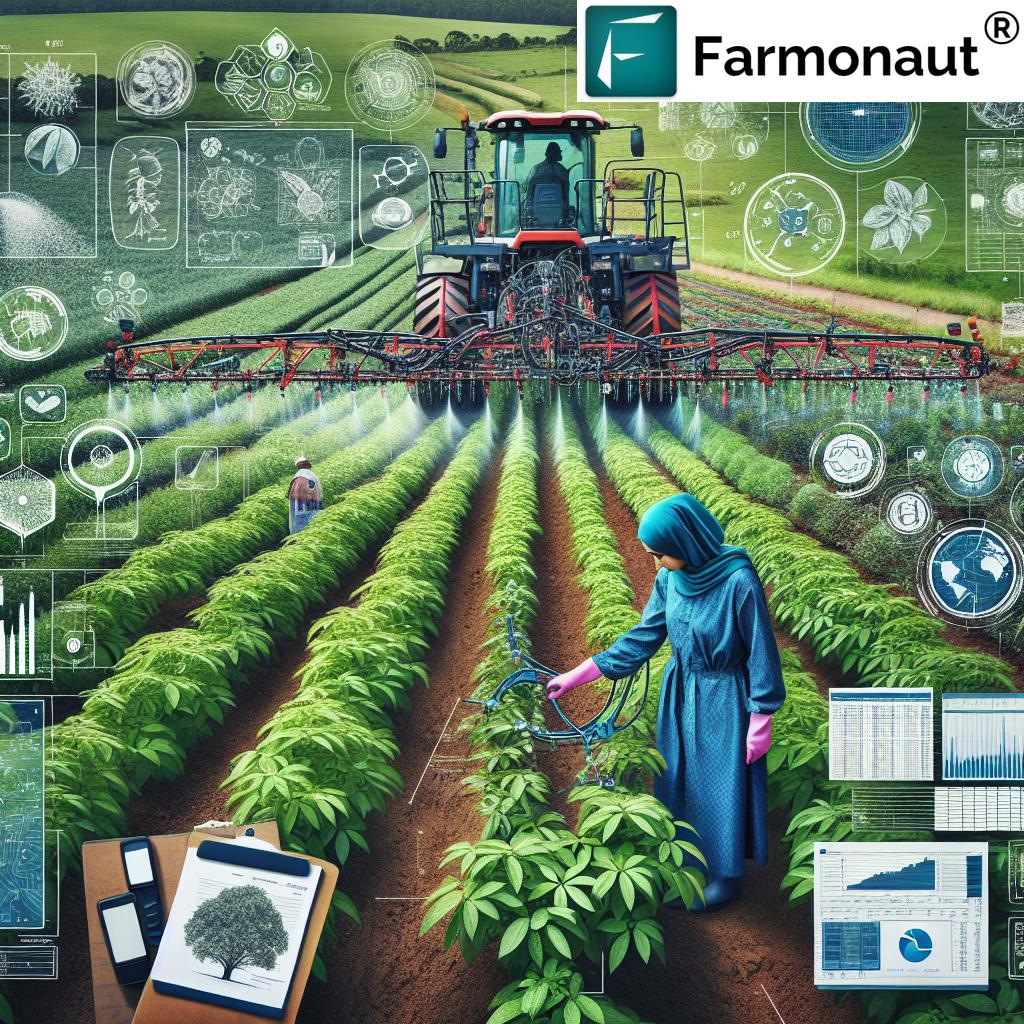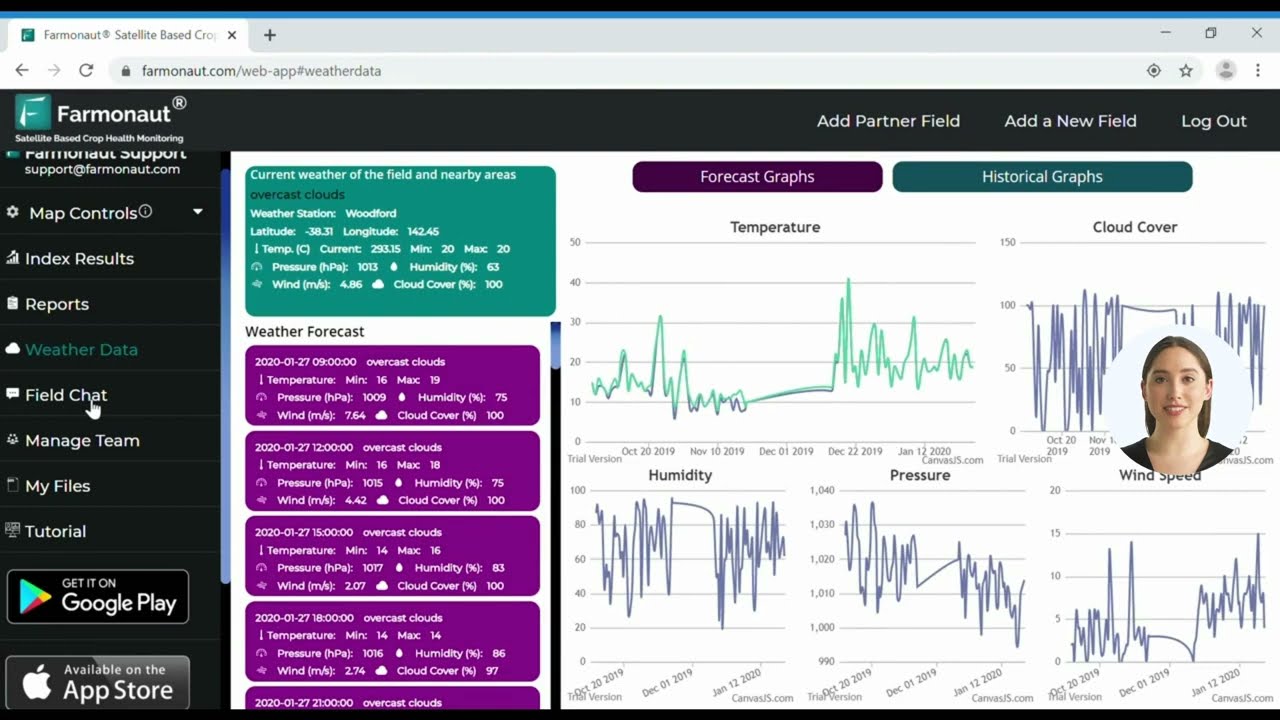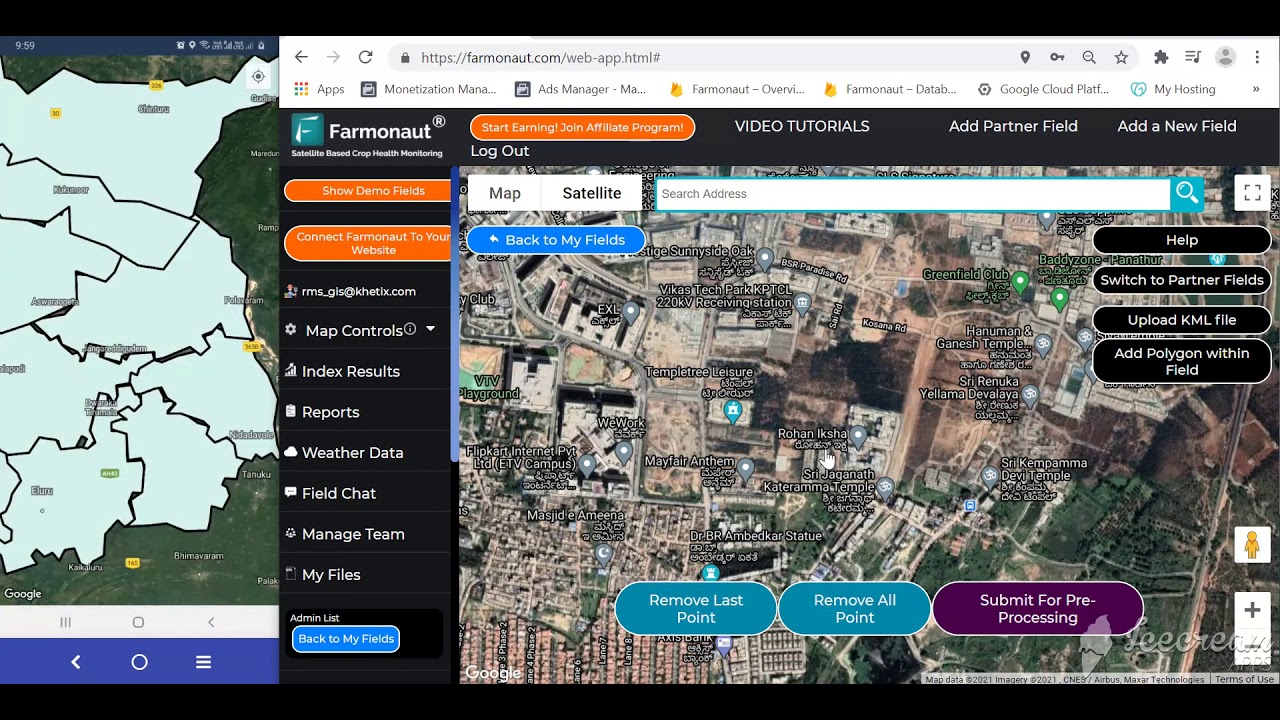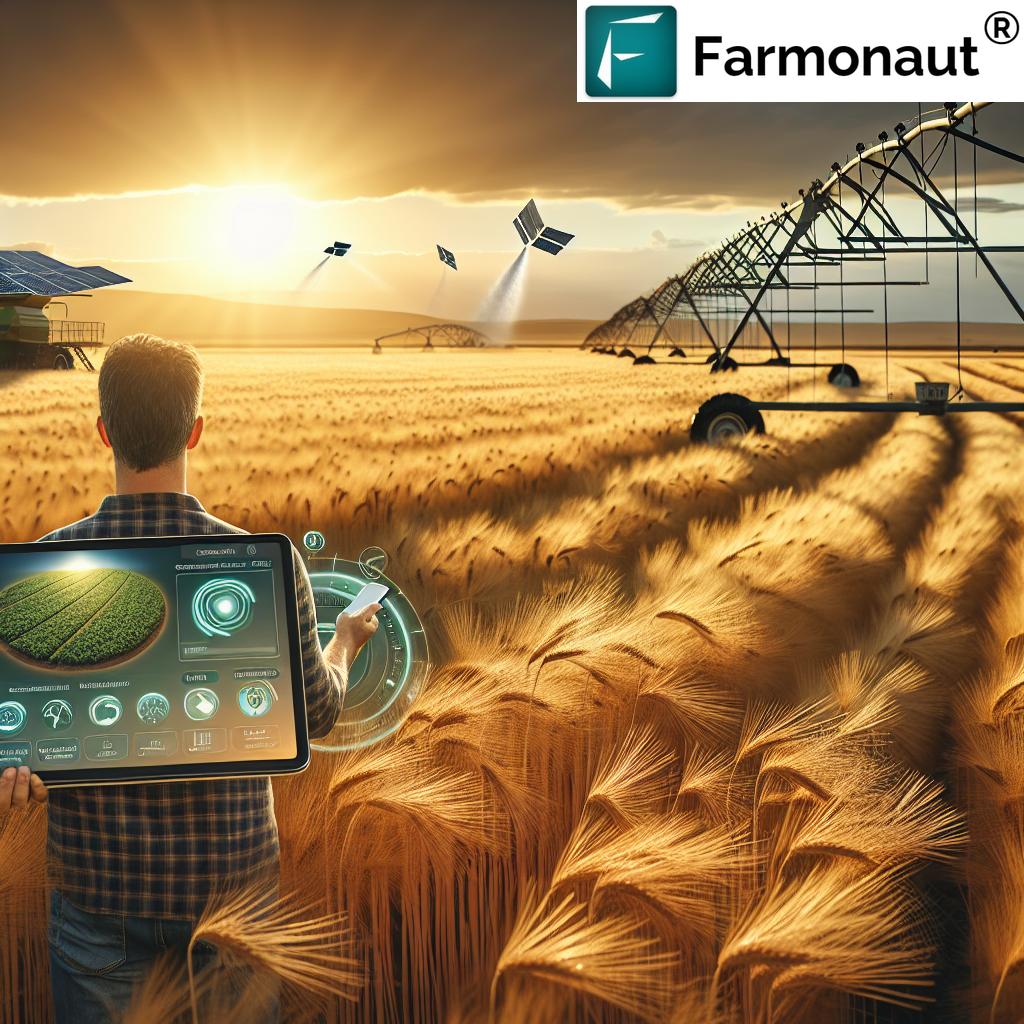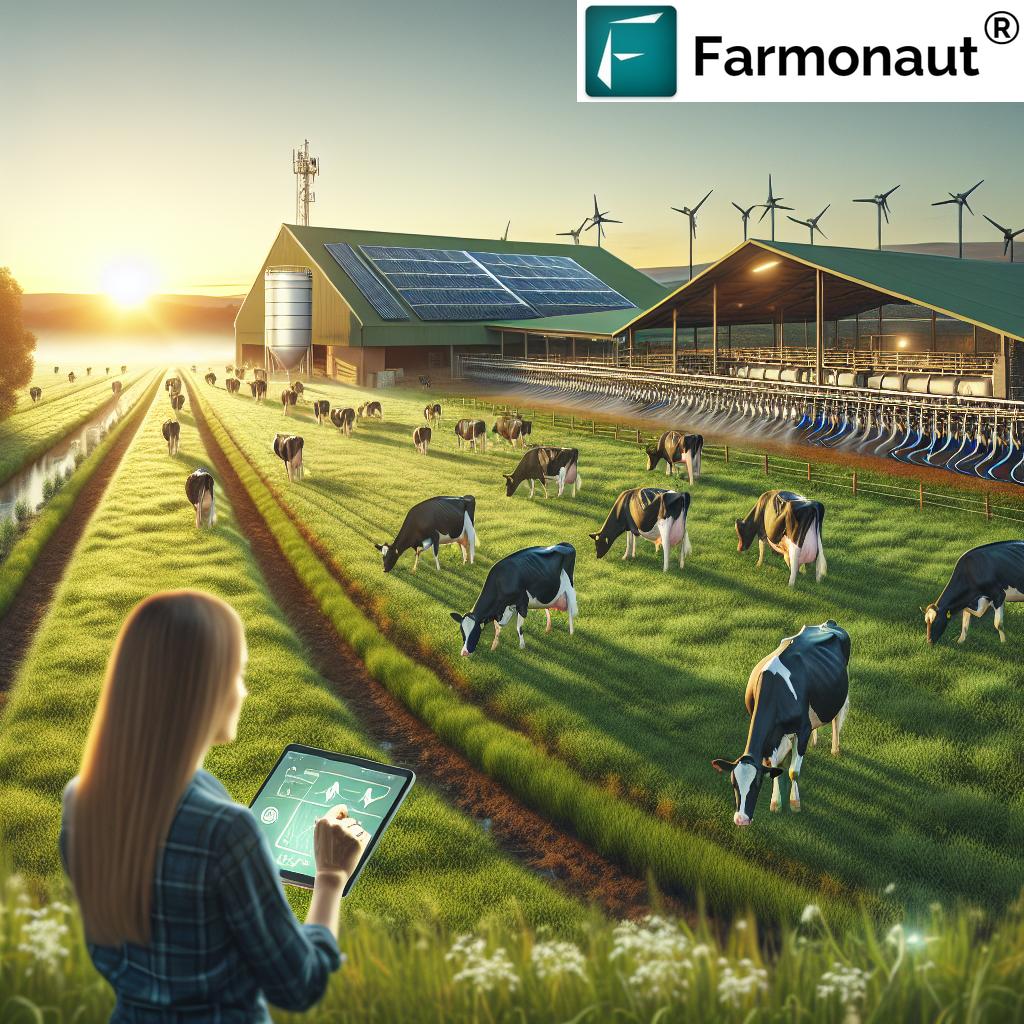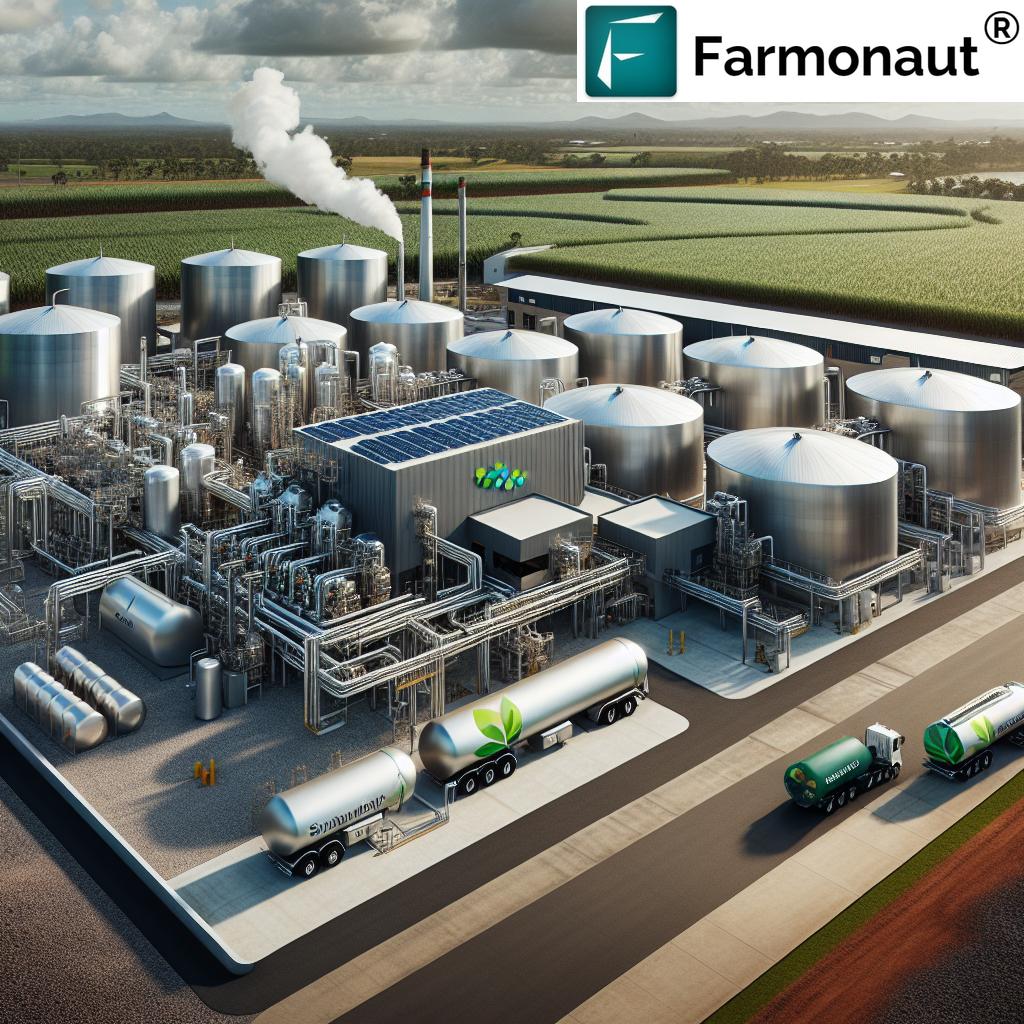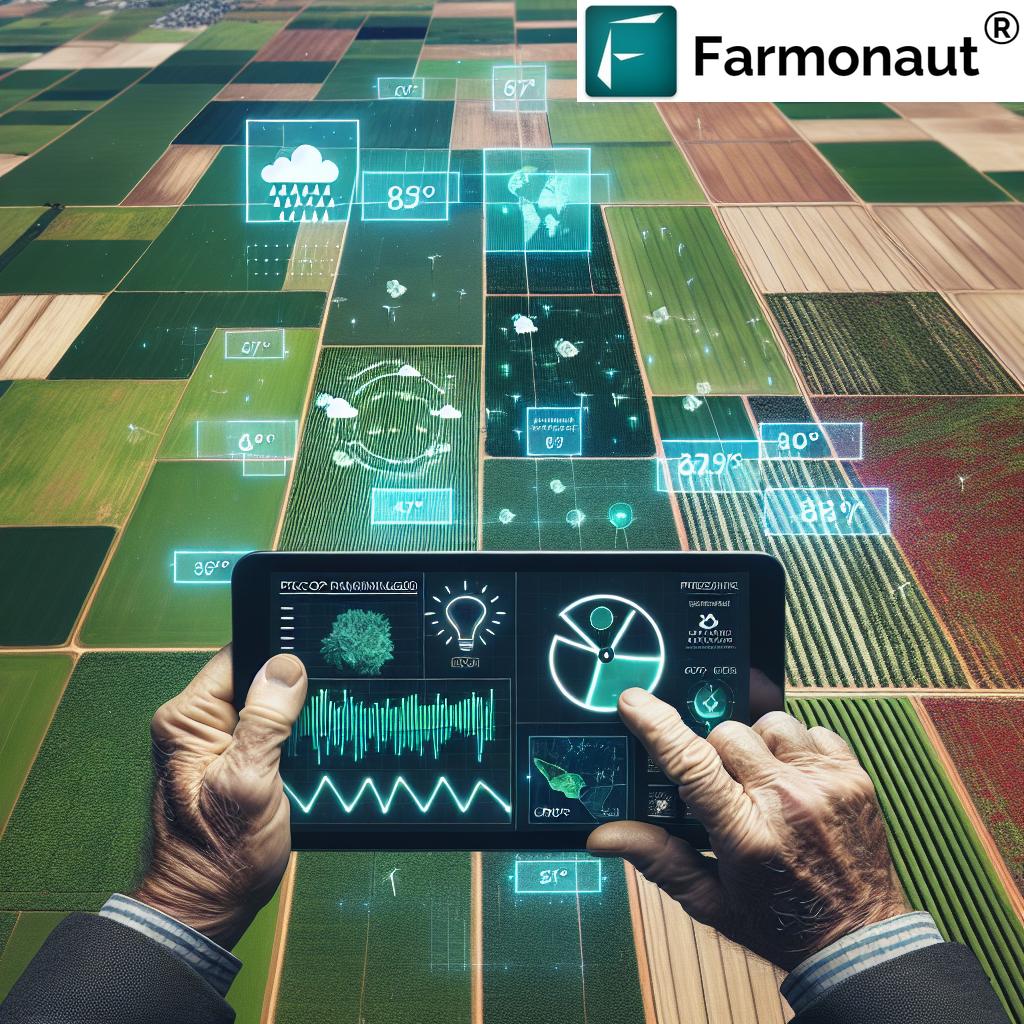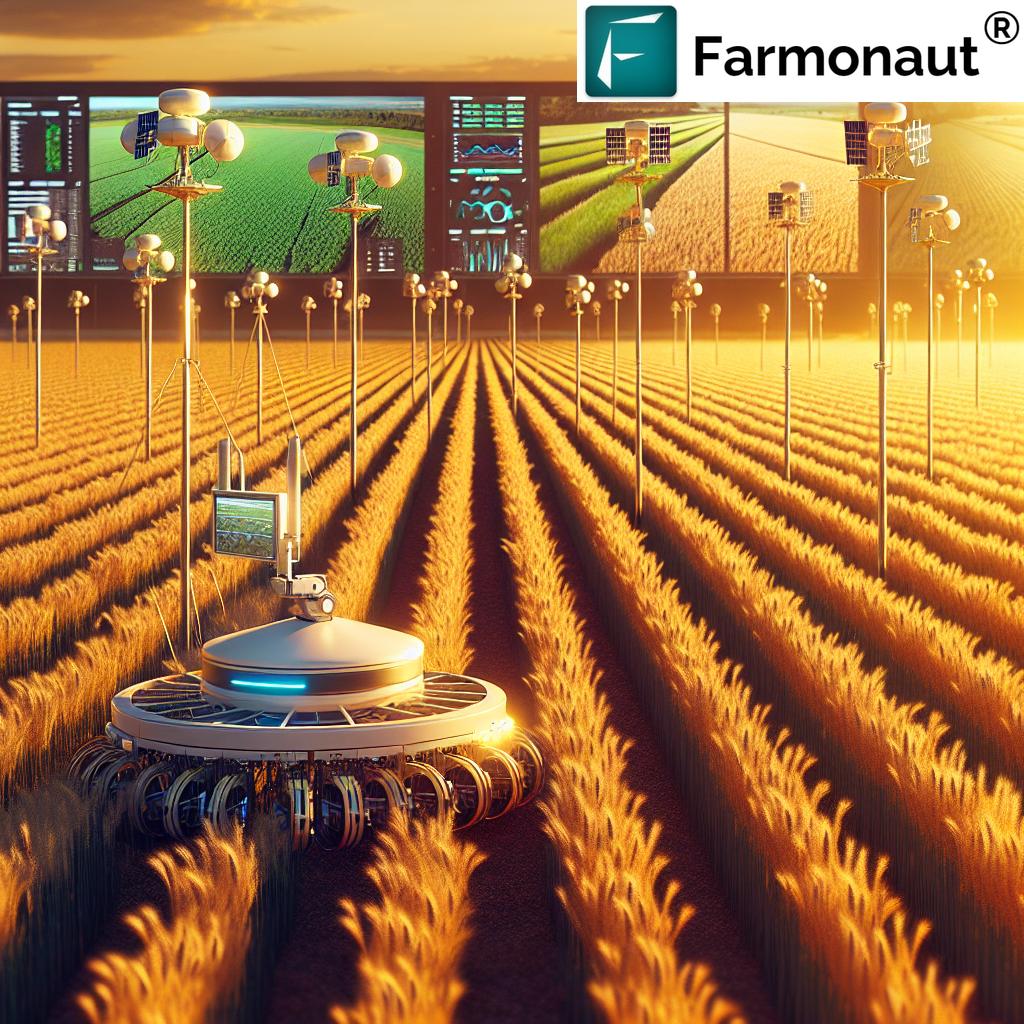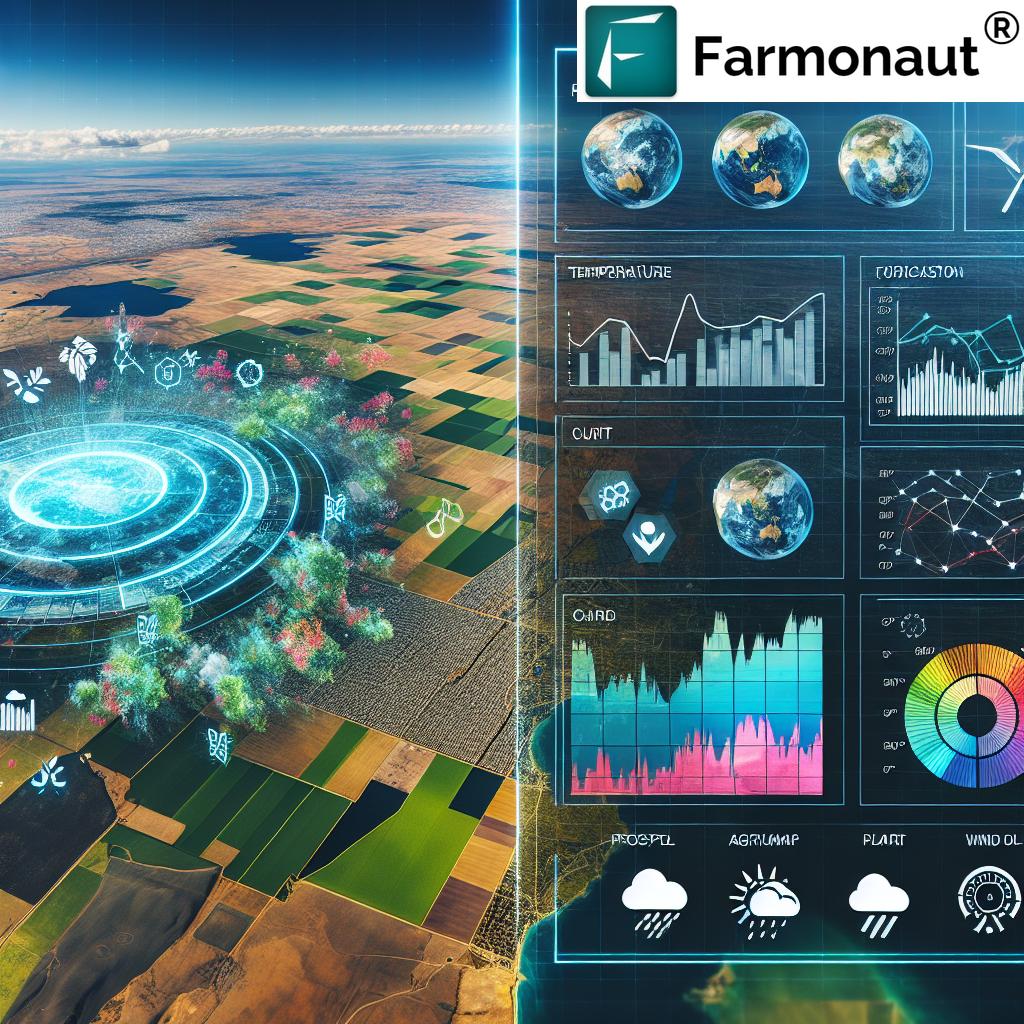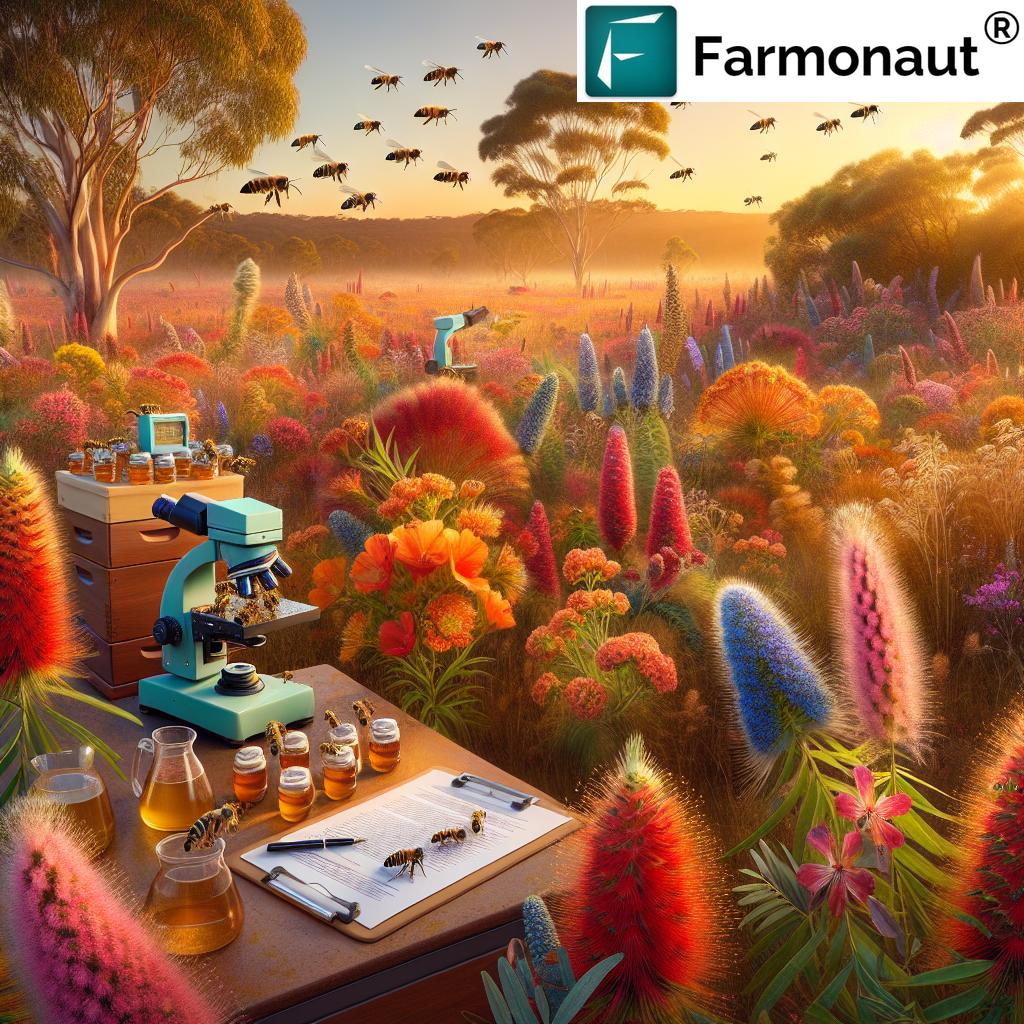- Introduction to Crop Application Systems NSW
- Quick Facts: Tech Adoption in NSW Agriculture
- Regulatory Framework for Crop and Pesticide Application in NSW
- Application Methods and Precision Technologies
- Crop Application System NSW: 7 Tech Innovations
- Comparative Table: Seven Leading Crop Application Technologies
- Sustainable Practices and Environmental Stewardship
- How Farmonaut Empowers Precision Agriculture in NSW and Beyond
- Pesticide Application Requirements NSW: Record-Keeping & Training
- Challenges, Risks & Future Directions in Crop Application Systems
- Frequently Asked Questions (FAQ)
“NSW farmers using precision tech saw a 15% increase in crop yields between 2021 and 2023.”
Crop Application System NSW: 7 Tech Innovations
In New South Wales (NSW), Australia, agriculture is entering a new era defined by technological breakthroughs, environmental stewardship, and strict regulatory compliance. The backbone of this evolution lies in the crop application systems NSW utilizes—a comprehensive network of methods, tools, and technologies for applying pesticides, fertilizers, water, and other inputs to crops.
These systems not only enhance productivity and yields but also support environmental sustainability and ensure all practices meet the highest regulatory standards established by authorities like the NSW Environment Protection Authority (EPA).
With precision agriculture technologies rapidly gaining traction, NSW farmers now have access to innovative tools that deliver greater accuracy, save resources, and minimize environmental impacts. From ground and aerial applications to digital smart irrigation systems and integration of data-driven decision support, the landscape of crop management is more dynamic than ever before.
This guide provides a detailed, factual overview of crop application systems NSW, stressing their technological evolution, operational methods, sustainability, regulatory context, and real-world benefits for modern farming in Australia.
Quick Facts: Tech Adoption in NSW Agriculture
“Over 80% of NSW crop application systems now integrate automated compliance monitoring technologies.”
Regulatory Framework for Crop and Pesticide Application in NSW
Adhering to strict regulatory requirements is fundamental to crop application systems NSW employs. All aspects—from pesticide application requirements NSW to fertilizer application best practices—are governed under well-established frameworks to ensure safety, environmental sustainability, and compliance.
Oversight by NSW Environment Protection Authority (EPA)
The NSW EPA is Australia’s key regulatory body overseeing use of pesticides and chemicals in agriculture. The Pesticides Regulation 2017 details mandatory licensing, training, record-keeping, and operational standards for all applicators—whether individuals or agribusinesses. Some highlights include:
- Ground Applicator License: Needed for any ground-based chemical applications. Applicators must complete accredited units such as AHCCHM307 (Chemical control of pests, weeds, and diseases) and AHCCHM304 (Transport and storage of chemicals).
- Record-Keeping: Detailed pesticide usage records are mandatory for a minimum of three years, ensuring traceability, audit-readiness, and compliance with pesticide record keeping regulations. For more, see the official EPA NSW ground applicators guide.
- Aerial Applicator Licensing: Operators using aircraft for pesticide or fertilizer application over large areas, difficult-to-reach sites, or variable terrain need special certification and follow more stringent protocols.
- Integrated Pest Management (IPM) Guidelines: Farms are encouraged and sometimes required to use multi-faceted IPM systems blending chemical, biological, and cultural pest control, as detailed in the integrated pest management NSW resources.
Key Regulatory Takeaways
- Strict licensing, training, and pesticide application requirements NSW.
- Mandatory compliance documentation on all input applications, weather, and outcomes.
- Incentives for use of precision agriculture technologies that support traceability and automated compliance.
Modern Application Methods in NSW Cropping Systems
A multitude of application systems and methods are in use across New South Wales. These are increasingly integrated with advanced technologies for better yield, optimized input usage, and minimizing environmental harm. Key methods include:
-
Ground Application:
- Employs tractors, sprayers, and implements for direct application of pesticides, fertilizers, and water to soil and plants.
- Favoured for its precision and ability to control application rate, reducing resource waste.
- Integrated with GPS-guided systems for better alignment and minimal overlap.
-
Aerial Application:
- Utilizes aircraft to distribute inputs over vast areas or tough terrains—important for large-scale farms or sites inaccessible by tractors.
- Requires rigorous adherence to aerial application safety protocols and licensing.
-
Spot Spraying (Targeted Spraying):
- Uses machine vision and optical sensing (e.g., WeedSeeker® 2) to detect and treat weeds precisely, reducing chemical usage by up to 90%.
- Ideal for promoting environmental sustainability in agriculture while lowering costs.
Crop Application System NSW: 7 Tech Innovations
Here are the seven most impactful technological innovations in modern crop application systems NSW that are transforming how farmers apply inputs, ensure compliance, and promote sustainability:
-
Precision Agriculture Technologies
- Uses GPS, satellite imagery, and digital tools for variable-rate input application aligned to crop and soil health variability.
- Benefits include targeted input use, lower costs, and better yields.
- Enables data-driven decisions on fertilizer, water, and pesticide application.
-
Smart Irrigation Systems
- Incorporate sensors, IoT devices, and real-time weather analytics to optimize water use and irrigation scheduling based on variable climate data.
- A central pillar of climate smart cropping methods.
-
Automated Compliance and Record-Keeping Systems
- Automate collection, storage, and reporting of pesticide and fertilizer application data to support audit trails and satisfy pesticide record keeping regulations.
- Drastically reduces manual paperwork and risk of non-compliance.
-
Integrated Pest Management (IPM) Tools
- Mix chemical, biological, and physical pest control while minimizing pesticide resistance, reducing overall chemical inputs, and maintaining crop health.
- NSW regulatory frameworks encourage adoption of integrated pest management NSW strategies.
-
Optical Spot Spraying Systems
- Artificial intelligence and sensor-based sprayers (e.g., WeedSeeker® 2) treat only detected weeds—reducing chemical loads and off-target impact.
- This method aligns with sustainable farming practices Australia.
-
Blockchain-Based Input Traceability Solutions
- Ensure end-to-end tracking of input applications and compliance, strengthening food safety and market access.
- Farmonaut’s traceability technology supports farmers, corporates, and governments in verifying crop origin and input records—critical for audit, export, and consumer trust.
-
AI-Based Farm Advisory Platforms
- Provide predictive insights on crop health, input application timing, climate risks, and best practices, leveraging big data for operational precision.
- Farmonaut’s Jeevn AI, for example, offers weather forecasts, input optimization, and real-time pest/disease alerts tailored to each field.
Comparative Table: Seven Leading Crop Application Technologies
| Technology Name | Primary Function | Estimated Yield Increase (%) | Implementation Cost (AUD, estimated) | Regulatory Compliance Support | Sustainability Impact |
|---|---|---|---|---|---|
| Precision Agriculture Technologies | Variable-rate application, targeted resource use | Up to 15-20% | $5,000–$30,000 per setup | Yes | High |
| Smart Irrigation Systems | Automated, sensor-driven water management | 10-18% | $3,000–$25,000 | Yes | High |
| Automated Compliance Management | Record-keeping and reporting for compliance | Indirect (saves penalties, improves processes) | $2,000–$8,000 | Yes | Medium |
| Integrated Pest Management Tools (IPM) | Multi-modal pest, disease, and weed control | 5-12% | $2,000–$10,000 | Yes | High |
| Optical Spot Spraying Systems | AI-enabled weed detection and targeted spraying | 5-15% (chemical savings up to 90%) | $7,000–$35,000 | Yes | High |
| Blockchain-Based Input Traceability | Full input tracking and food chain transparency | 2-8% | $1,500–$7,500 | Yes | High |
| AI-Based Farm Advisory Platforms | Predictive analytics for farm management | 8-18% | $2,500–$10,000 | Yes | Medium–High |
Advancing Sustainability and Environmental Performance
Sustainable farming practices Australia are at the forefront of the NSW cropping sector’s vision for long-term growth and grid resilience. Modern crop application systems NSW are designed to:
- Reduce chemical and fertilizer usage: Only apply what’s needed, where it’s needed, minimizing waste and runoff.
- Promote soil health and biodiversity: Through conservation tillage, crop rotation, and advance sowing (“no kill cropping”), which sows directly into existing pastures, preserving natural ecosystems.
- Support climate adaptation: Digital, climate-smart irrigated cropping systems that flexibly respond to rainfall variability and drought.
- Lower carbon footprint: Monitor and manage greenhouse gas emissions with platforms like Farmonaut’s carbon footprint tracking tool.
These sustainable practices do not only protect the environment but ensure the long-term resilience of agricultural businesses in NSW and greater Australia. Platforms offering large-scale farm management support—like Farmonaut’s Agro-Admin App—can help streamline resource management, enhance traceability, and maximize efficiency across diversified properties.
How We at Farmonaut Enable Precision and Sustainability for NSW Agriculture
We at Farmonaut are proud to support the global push towards precise, sustainable, and compliant crop application systems—not only for NSW, Australia, but for farmers worldwide. Here’s how our unique technologies and platforms benefit modern agriculture:
- Satellite-Based Crop Health Monitoring: Our system delivers real-time NDVI and soil moisture data, letting farmers optimize irrigation, fertilization, and pest control—minimizing input waste and maximizing yield.
- AI-Powered Jeevn Advisory: We offer tailored recommendations (based on up-to-date satellite, climate, and on-farm input) to safely increase productivity and reduce environmental risks.
- Blockchain Traceability: Our traceability solution assists users through transparent, end-to-end tracking of input application, ensuring compliance and robust food supply chain integrity.
- Carbon and Resource Management: Through our platforms, farmers and agribusinesses can calculate and monitor their carbon footprint, helping them meet regulatory targets and consumer demand for environmentally responsible practices.
- API Integrations: For agritech developers, organizations, and researchers aiming to bolster granular insights, Farmonaut offers a powerful satellite weather and crop monitoring API (see API developer docs).
For large-scale farm and plantation management, our integrated solutions make fleet/logistics oversight, resource allocation, and farm compliance easier and more intelligence-driven.
Through affordable subscription models—see options below—we remain committed to making precision agriculture accessible to farmers of all scales and locations.
Pesticide Application Requirements NSW: Record-Keeping & Training
Ensuring pesticide application requirements NSW are met is a legal and operational necessity for every agricultural business. Here’s how compliance is achieved through best practices, documentation, and ongoing education:
Accurate Record Keeping for Compliance and Sustainability
-
Pesticide Application Records: All farmers in NSW must record:
- Product used (chemical name and trade label)
- Target crop or pest
- Application date/time, area, spray rate, method, and equipment used
- Earth and weather conditions at application time
- Retention for Audit: Keep all records for at least three years after use.
- Digital Tools: Many farms use apps/platforms—such as those supplied by us—to streamline, automate, and store pesticide record keeping regulations.
Mandatory Training & Licensing
- Completion of approved units (e.g., AHCCHM307, AHCCHM304) linked directly to safe application of pesticides, chemicals, and fertilizers.
- Regular renewal and update courses—keeping applicators up-to-date on advances in methods, safety, and compliance.
For details on licensing and available acoustic learning resources, see the EPA NSW ground applicator guideline and cropper intensive training information.
Challenges, Risks & Future Directions for Crop Application Systems in NSW
While technological innovation is driving productivity and sustainability, several challenges continue to shape the evolution of crop application systems NSW:
- Pesticide Resistance: Overuse or repetitive application of the same chemical increases resistance among weeds, pests, and diseases—requiring rotation, integrated pest management NSW strategies, and judicious application.
- Climate Change & Weather Variability: Increasingly unpredictable weather patterns, droughts, and rainfall impact crop cycles and water resources. Smart irrigation systems and climate smart cropping methods are essential countermeasures.
- Technological Adoption: Upfront costs of modernizing application systems can be prohibitive for some. Continued farm training, demonstrations, and subsidies are vital.
- Regulatory Complexity: With multiple layers of record keeping, licensing, and compliance, digital automation and integrated farm management systems—such as those from our platform—help reduce the burden and risk.
The future will be characterized by further convergence of AI, machine learning, and satellite technology to predict optimal timing of input applications, dynamically monitor compliance, and power blockchain-based traceability from paddock to plate.
For software developers, technology managers, or agri-research organizations, our Satellite Weather & Crop Monitoring API and accompanying Developer Documentation facilitate seamless integration of precision agriculture data into your custom solutions—supporting the next generation of agri-systems in Australia and beyond.
“Over 80% of NSW crop application systems now integrate automated compliance monitoring technologies.”
Frequently Asked Questions: Crop Application System NSW
What are crop application systems NSW, and why are they important?
Crop application systems in NSW refer to the structured methods, technologies, and procedures used to apply pesticides, fertilizers, water, and biological treatments to crops. These systems are essential for boosting yields, meeting regulatory standards, conserving resources, reducing environmental impact, and fighting pest and weed resistance.
Who regulates crop and pesticide applications in NSW?
The NSW Environment Protection Authority (EPA) regulates all aspects of pesticide management, including licensing, training, permitted use, safe transport, storage, and record-keeping obligations. All applicators must comply with Pesticides Regulation 2017 and related standards.
What are the main benefits of using precision agriculture technologies?
Precision agriculture technologies support more accurate input application, lower costs, reduced chemical and water usage, improved compliance, and enhanced sustainability. They help maximize yield and profitability while minimizing environmental risks.
How can digital tools help with pesticide application record keeping regulations?
Digital tools and platforms automate the collection and secure storage of pesticide application data. This ensures compliance with regulations, makes audits easier, and allows for rapid access to historical application information.
Why is integrated pest management NSW encouraged by authorities?
Integrated pest management (IPM) combines biological, chemical, physical, and cultural tools to reduce pest pressure while limiting chemical use. This approach curbs the development of pesticide resistance and supports environmental sustainability in agriculture.
How do I choose the right application systems for my operation?
Consider the size, type, and location of your fields, the main crop and pest challenges, and your compliance burden. Leverage comparison tables like the one above, and consult farm management platforms or AI-powered advisory services for tailored insights.
Join leading, innovative, and sustainable NSW farmers by harnessing the power of precision crop application systems—accessible through affordable, advanced solutions like those from Farmonaut. For more, download our app, explore our API, or learn about traceability and fleet management.
The future of crop application systems NSW is intelligent, sustainable, and compliance-driven. Let’s shape it together, one innovation at a time.








